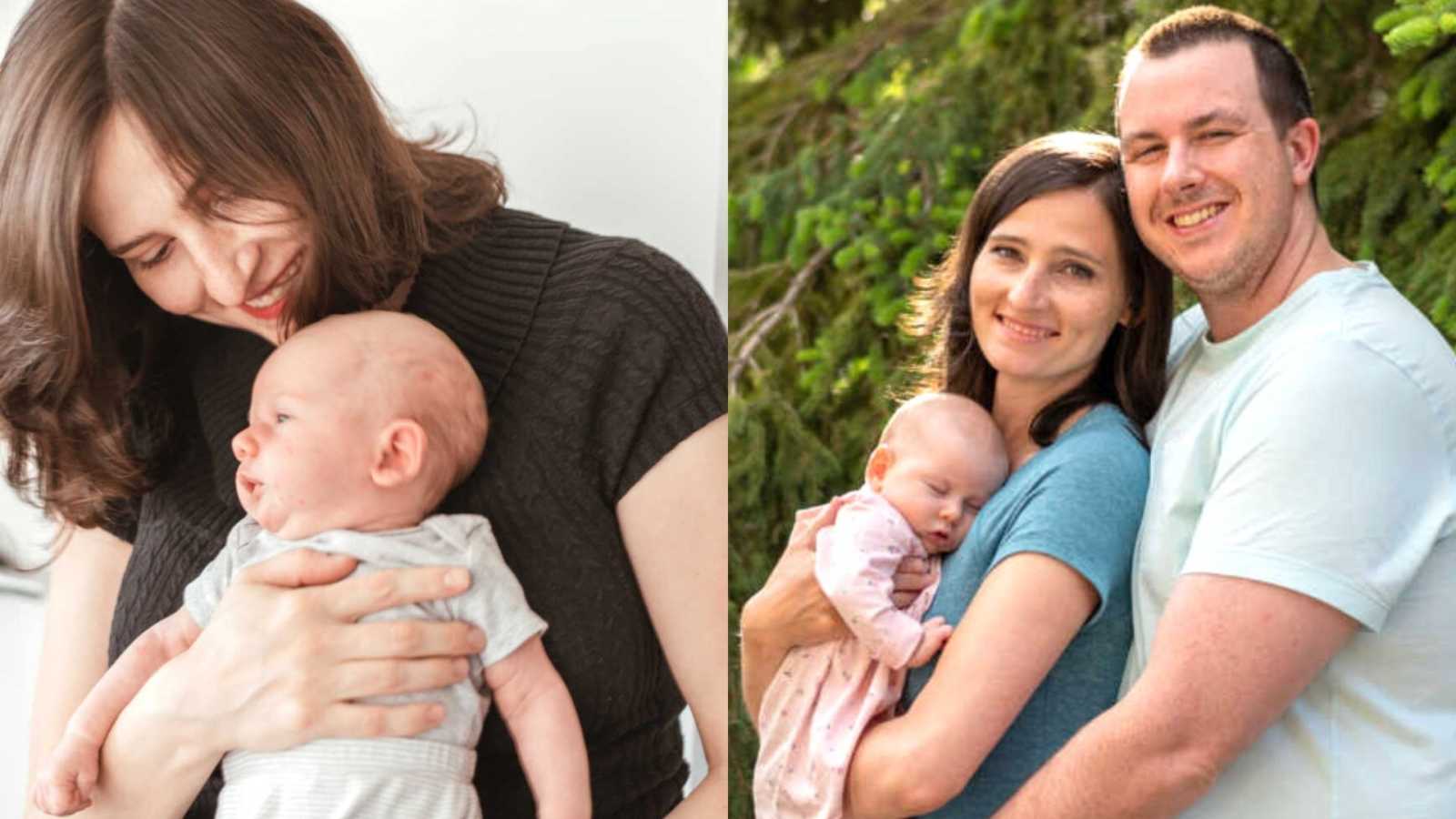“I used to think when women give birth, they either have milk and breastfeed, or they do not have enough milk and thus they do not breastfeed, or they choose not to. I also thought all babies are born with the breastfeeding instinct, that they just know what to do! Have you ever watched YouTube videos with titles like ‘Breast Crawl’? They show right after they are born, babies are able to crawl to the boob, latch, and start eating. How cool is that?! Easy peasy! Well, not that easy. At least, it was not for me.
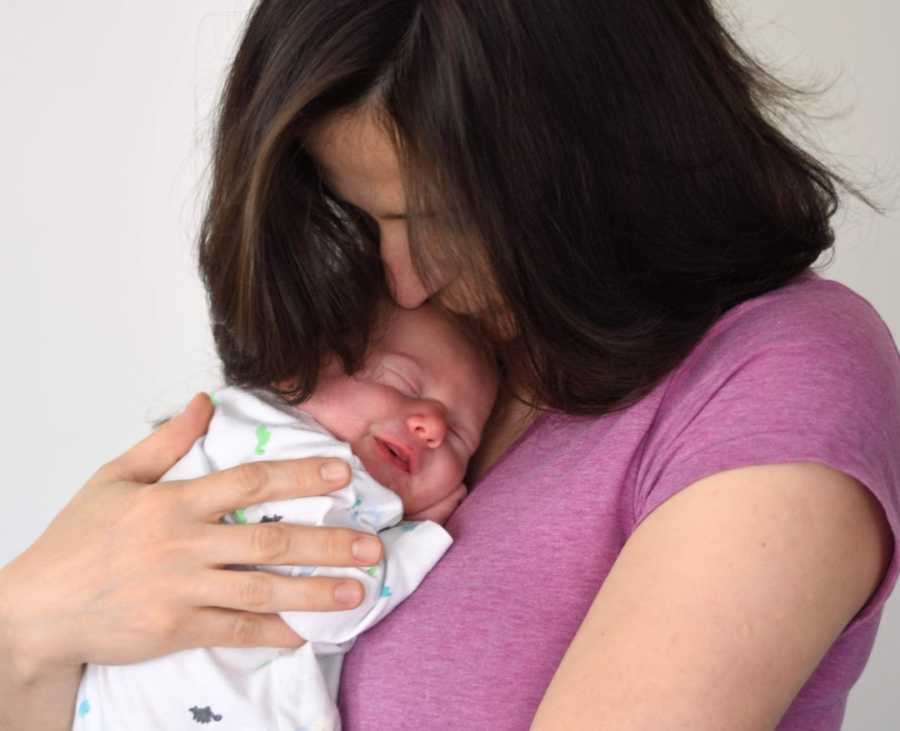
A few minutes after Nina was born, I tried to breastfeed her. A nurse was helping me to position her properly and get her to start eating. We tried and we tried and we tried, but she just could not latch. I am not sure how much she was able to eat, probably enough for her first feeding, but I had to figure out this whole breastfeeding thing as she would need to eat more every day! During our stay at the hospital, which was about 24 hours after giving birth, I had two nurses trying to help me latch Nina but it was not working. The breastfeeding consultant at the hospital said it was too early to tell whether she had a tongue tie or not, but it did not seem like she did.

Our midwife came to check on us. She tried to help me with breastfeeding as well, and I was amazed at how confident and knowledgeable she was. Nina was able to latch and eat. But not for long, as she was not able to keep a good latch. I remember my midwife saying I need to guide her and be more confident with my movements as my baby was not made of glass! She pointed out which sound Nina should be making when she is latched properly and eating. I was hopeful. I thought we would figure this out, her and I. It would just take us a few days.
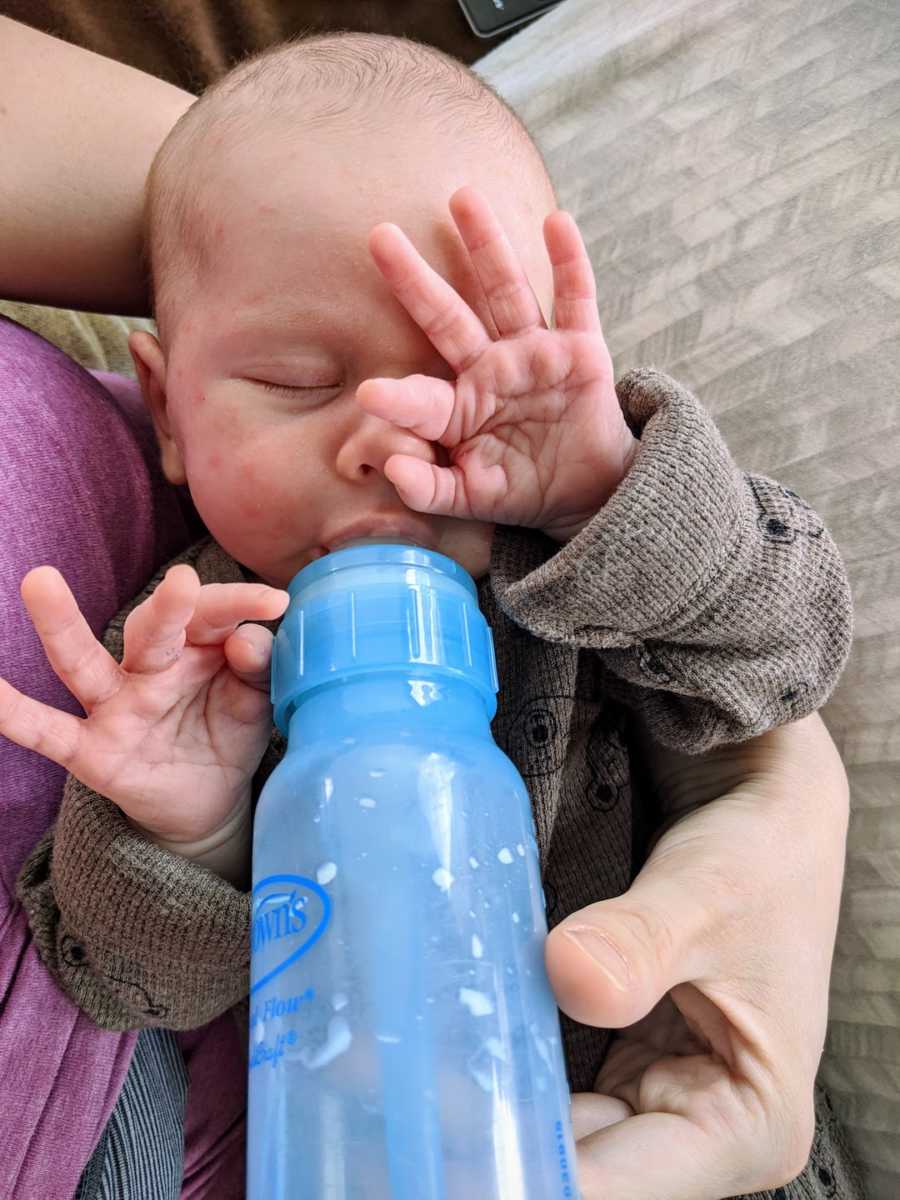
When it was almost time to leave the hospital, I tried nursing Nina again, but it did not work. Another nurse stopped by and tried to help me feed Nina. After a few minutes, she said she was going to bring a breast pump so I could pump some colostrum to make sure I have some food for my baby girl when we got home. I thought, ‘A breast pump? Really?’ I do not remember exactly how much I pumped but I remember the nurse saying I had a lot of colostrum, which was not very common. Apparently, it was a good sign I should have a good milk supply. It gave me hope! She helped me feed Nina with a dropper at the hospital, and packed the rest in a small bottle for us to take home. I pumped enough to feed my baby girl in the next 24 hours. She also recommended we rent a breast pump if I wanted my daughter to have breast milk instead of formula, at least until she grows a bit and is able to latch properly. I know a lot of babies drink formula and everything is fine, but I really wanted to be able to nurse my baby girl. I just had it stuck in my head this is what I wanted to do!
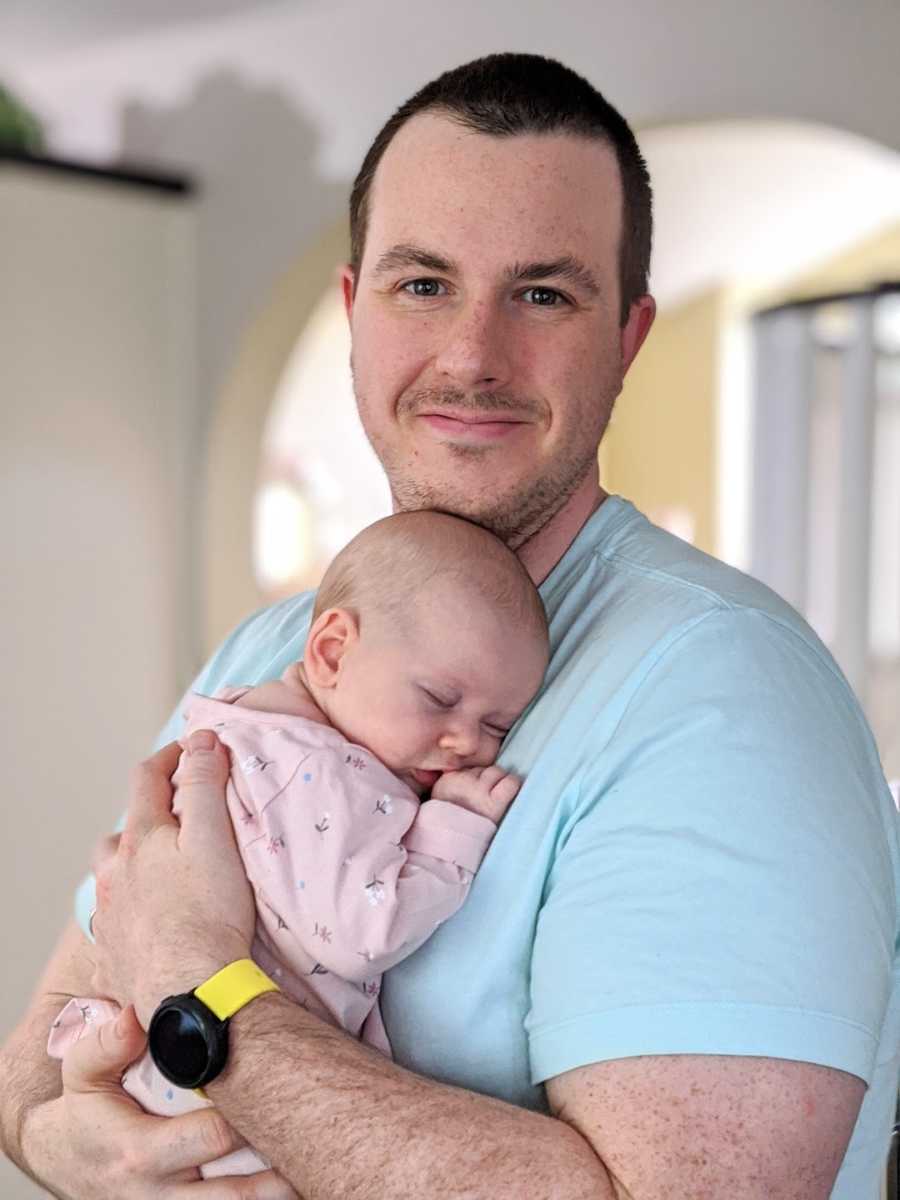
The following day, one of my midwives came to visit us at home. It would have been a phone conversation because of Covid, but since I had troubles with breastfeeding, she decided to come and see us in person. She had full protective clothes on, gloves, a mask, a face shield – oh what a strange world we live in these days! I tried nursing with her help again, it worked for a very short period of time, then Nina would just come off or would start falling asleep on the job. That’s when I began to cry. I could not understand why she would not latch and eat. Was something wrong with my breast, my nipples, my milk? Was there something wrong with her? How am I supposed to feed her? How will I know if she’s had enough? Will I ever be able to breastfeed her? Will I ever be able to figure it out? I just could not understand why it was not working, I felt so much guilt, I felt like a failure. I thought breastfeeding was something my body was equipped to do. My mom did not have any problems nursing me. What was I doing wrong?

My midwife agreed getting a pump was a good idea. She also suggested I get a nipple shield, which might help Nina to get a better latch. That afternoon, we rented a pump from the pharmacy and I started pumping. We also got a nipple shield, and it did make a big difference: Nina was able to latch and eat. She would not last long though, and she would start falling asleep while eating. My husband and I would tickle her toes and sides, or stroke her cheeks to keep her awake on the job. Since she was barely eating, I had to pump after every feeding, and give her breast milk in the bottle.
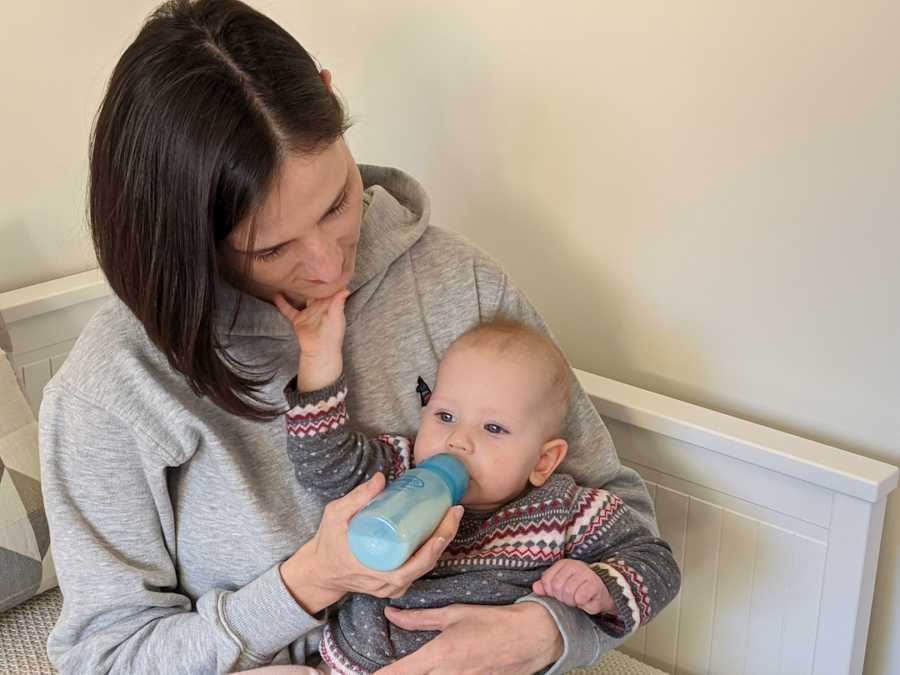
We thought she would grow out of it. I would only need to pump for a few days or a few weeks, and one day, she would figure out what she needed to do. I wished I could reach out to my friends who had babies. I wished they could come over and help me, show me, teach me, but we could not do that because of the pandemic. I desperately wanted some help! My midwives were not able to come and see us, even though they were checking on us once a week for 6 weeks after giving birth. We would have had in-person appointments, but because of Covid, we could only talk on the phone. I wanted my midwife to be next to me every time I tried to nurse Nina because she knew exactly what to do! But unfortunately, it was not possible.
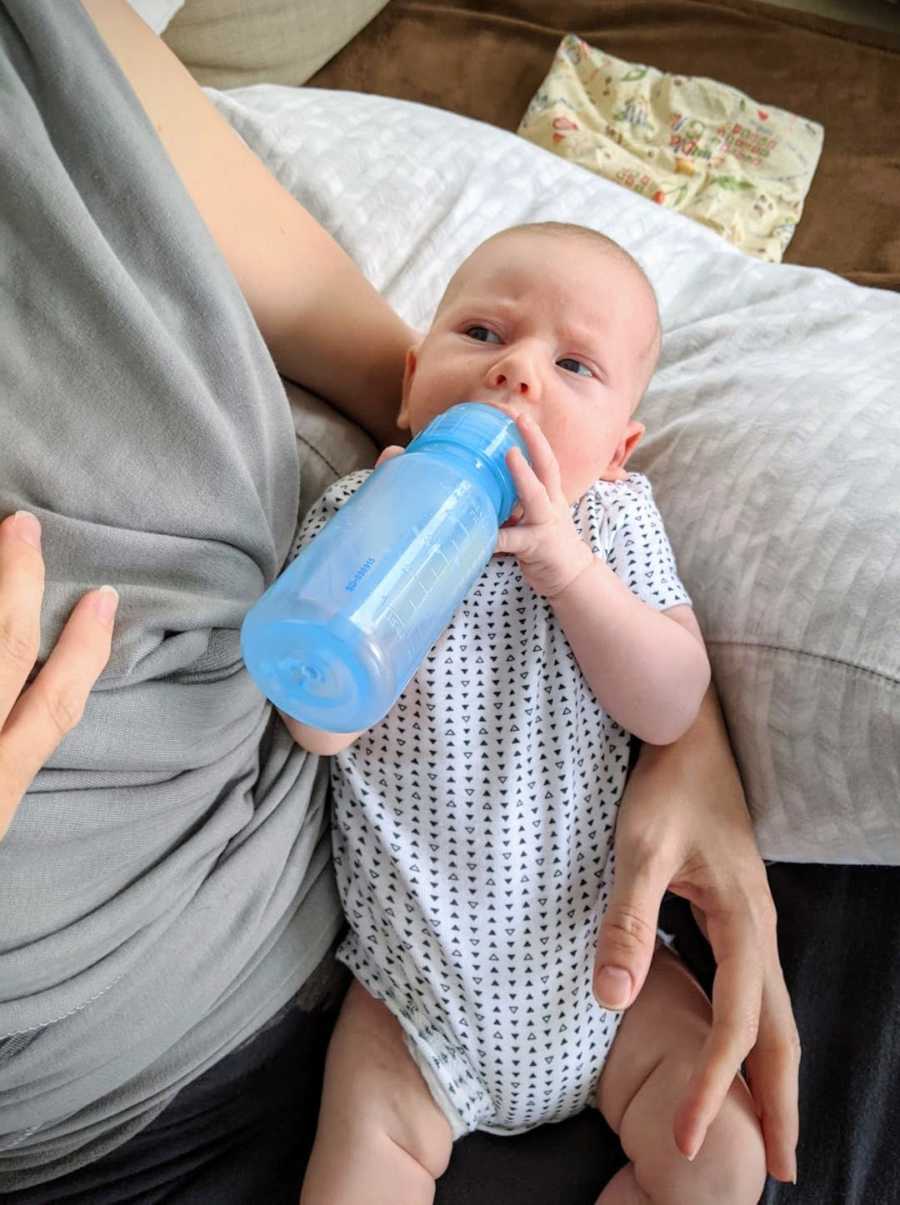
A few weeks later, we were able to see a breastfeeding doctor, who checked if Nina had a tongue tie (which she did not) and showed me a couple of different positions that could work better for feeding her – like a football hold, or with a pillow in my lap, and a small stool under my feet. She said Nina had a small chin and an overbite that prevented her from latching properly. She may or may not grow out of it. The doctor said I should still keep trying to offer her breast (with a nipple shield) followed by pumped milk in a bottle. Unfortunately, Nina did not want anything to do with my breast (with or without a nipple shield, and in any breastfeeding position possible), she would start fussing and crying, or she would start eating but it would only last a minute or two. I was devastated, I cried a lot. I thought I was failing as a mother. All my life, I heard a lot of ‘breast is best’, ‘every woman should breastfeed’, ‘breast milk is the only way to go.’ They were so engraved in my mind I just could not accept it was not working. I felt a lot of pressure to comply with ‘breastfeeding standards’ that existed in my mind. I was too hard on myself.
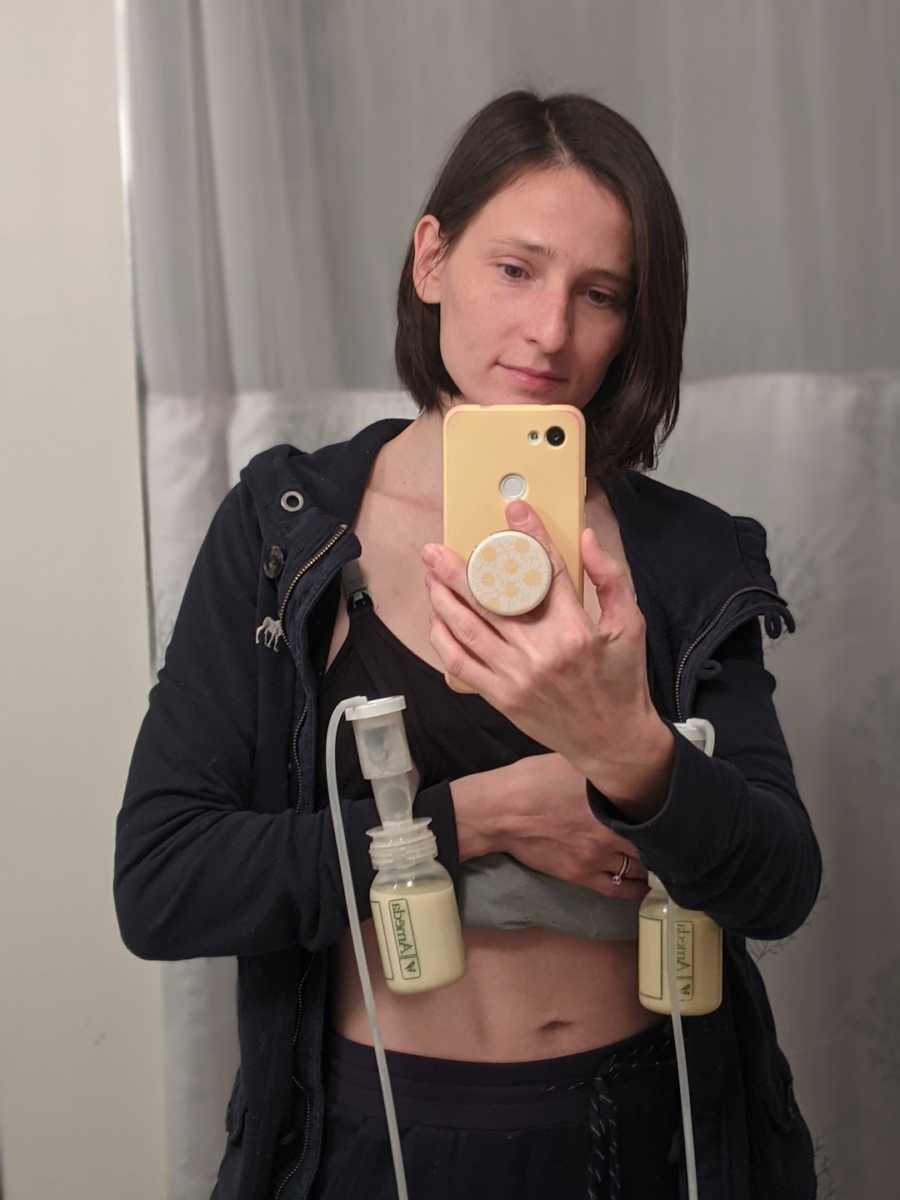
The lack of sleep, inability to breastfeed my daughter, switching to exclusive pumping, being in isolation due to coronavirus – all that quickly piled up and made me feel that I was incapable of being the mother I wanted to be. I was swimming in a pool of anxiety. I was not ready to accept breastfeeding was outside of my control. I was jealous of moms on social media whose motherhood and breastfeeding looked easy and flawless. I wanted to be one of those moms. It took a few therapy sessions to get me out of that state of mind and to ensure I would not develop postpartum depression. I was pumping every 5-6 hours, day and night. Everything revolved around my pumping schedule because when it is time to pump, it is time to pump. After about 4 weeks of pumping with a rented pump, I ended up buying my own pump as it made more sense financially.

I had a lot of milk, more than Nina was able to eat. I was dumping all leftovers until a friend of mine mentioned her milk dried up a couple of months after giving birth. It got me worried. I wanted the best nourishment for my baby girl, and I knew breast milk was better than formula. I was committed to pumping as long as my body would let me, I wanted my milk to last at least until she turns 1. That’s why I bought the breast milk storage bags and started building a stash in the freezer. After about 3 months, the bags with breast milk took over our freezer. There was barely any room for anything else. That’s when I started looking into donating breast milk. I had too much. At that point, I was confident I would be able to build a new stash pretty quickly.

I had no idea where to start, where to go, and who to ask for help. I did not know anyone who was pumping, let alone donating breast milk. None of my friends pumped with their babies. I decided to ask on Facebook, in the closed group of moms who had babies of Nina’s age. Due to the pandemic, this was my only way of communicating with other new moms. They recommended a couple of groups on Facebook that were all about donating breast milk, and there is actually a separate group for each Province.
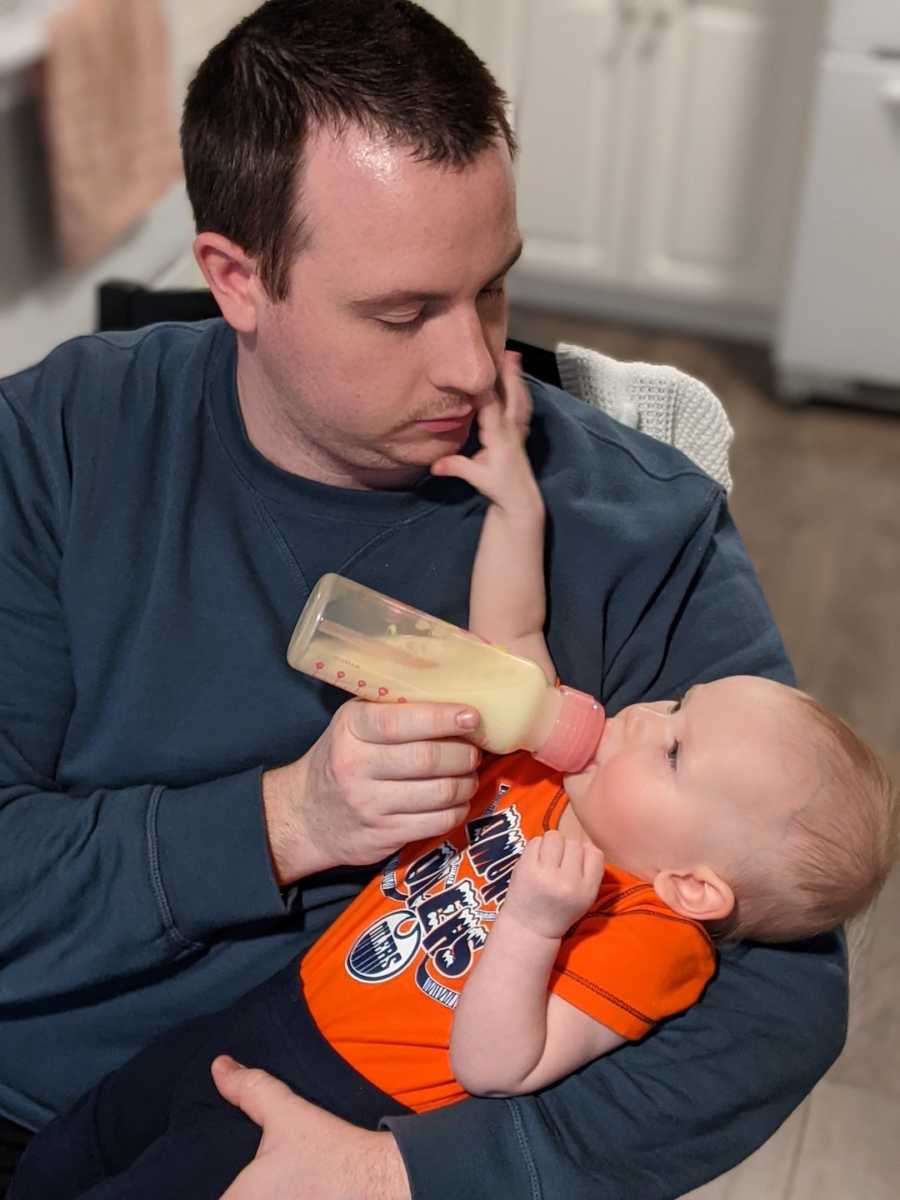
I was not sure if I should just post something on Facebook. By that time, I’d read some stories there were people who would get breast milk and then try to sell it to someone else. I wanted my breast milk to get into good hands, to someone who desperately needs it, and I did not understand how people could agree to take my breast milk for their little ones without even knowing if I was healthy enough, especially during the pandemic. What if I was smoking a pack of cigarettes a day and drank a bottle of wine every night? I needed some reassurance I am not just getting rid of extra milk but I am helping someone who actually needs it, and this someone trusts it meets the required health and quality standards. If I were the one in need of milk for my baby, that’s exactly what I would want.
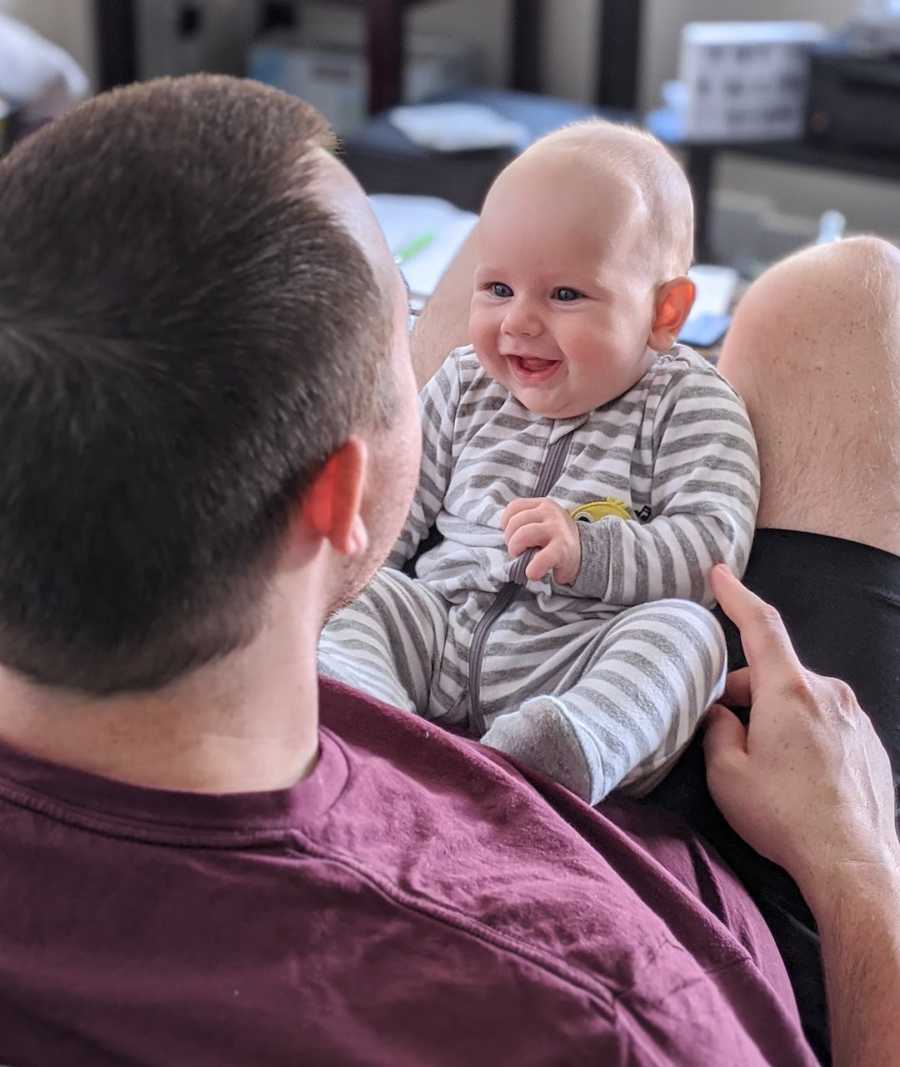
After doing some more research, I decided to submit an application to BC Women’s Hospital to become a breast milk donor. The whole screening and testing process took about 3 weeks, and then I was approved to become a donor. I was relieved, happy and nervous at the same time. It was a great relief to get confirmation I was healthy and my milk meets the requirements. I was happy I would be able to help other babies whose mothers were unable to produce enough milk on their own. I was nervous because I had never been a donor before, it was a very new feeling for me. Also, I was a little nervous if I would be able to build a new stash if I donate everything I had in the freezer at that time. That is why my first donation was only half of my stash – I donated 5,100 ml. A couple of months later I completely emptied my freezer and donated 10,600 ml. As of today, I have donated 50 liters (close to 1,690 ounces) of breast milk. Nina is now 10 months old and I am still pumping strong.
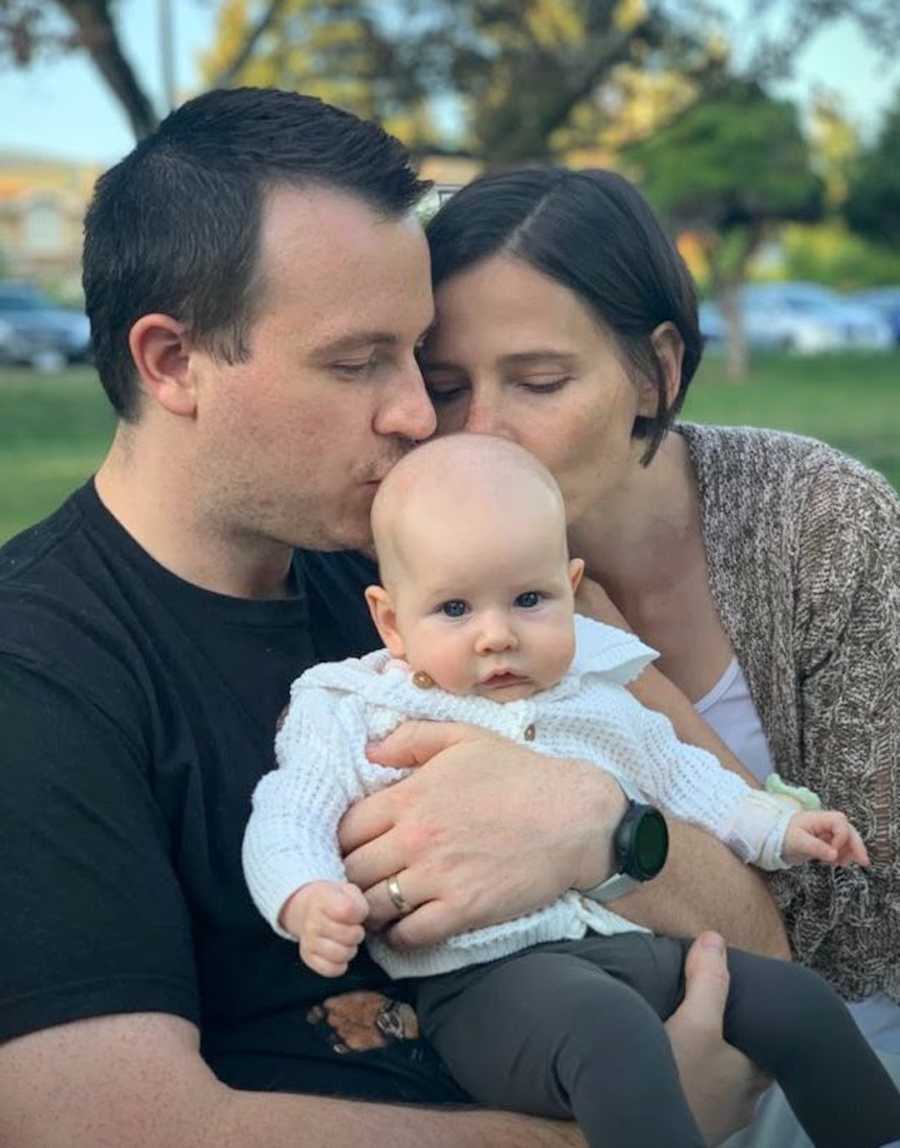
I still offer my breast to my daughter (with a nipple shield), but she is not a booby baby. She will only eat for a few minutes at a time. I imagine she thinks of it more as snack-time rather than feeding-time when she is supposed to work hard. Sometimes booby time is the only way she would calm down if she gets overtired. That’s it.

It still makes me sad and frustrated. I still ask myself, ‘What is wrong with my body?’ I do not allow these thoughts and feelings to consume me and to generate more suffering. I try to notice them once they appear and switch my mind to a positive mode. My husband has been amazing and very supportive throughout this whole breastfeeding/pumping journey. Whenever I get sad or upset, he is there to remind me Nina is getting my milk and this is what matters. When he is not around, I tell myself the same thing, and it helps.
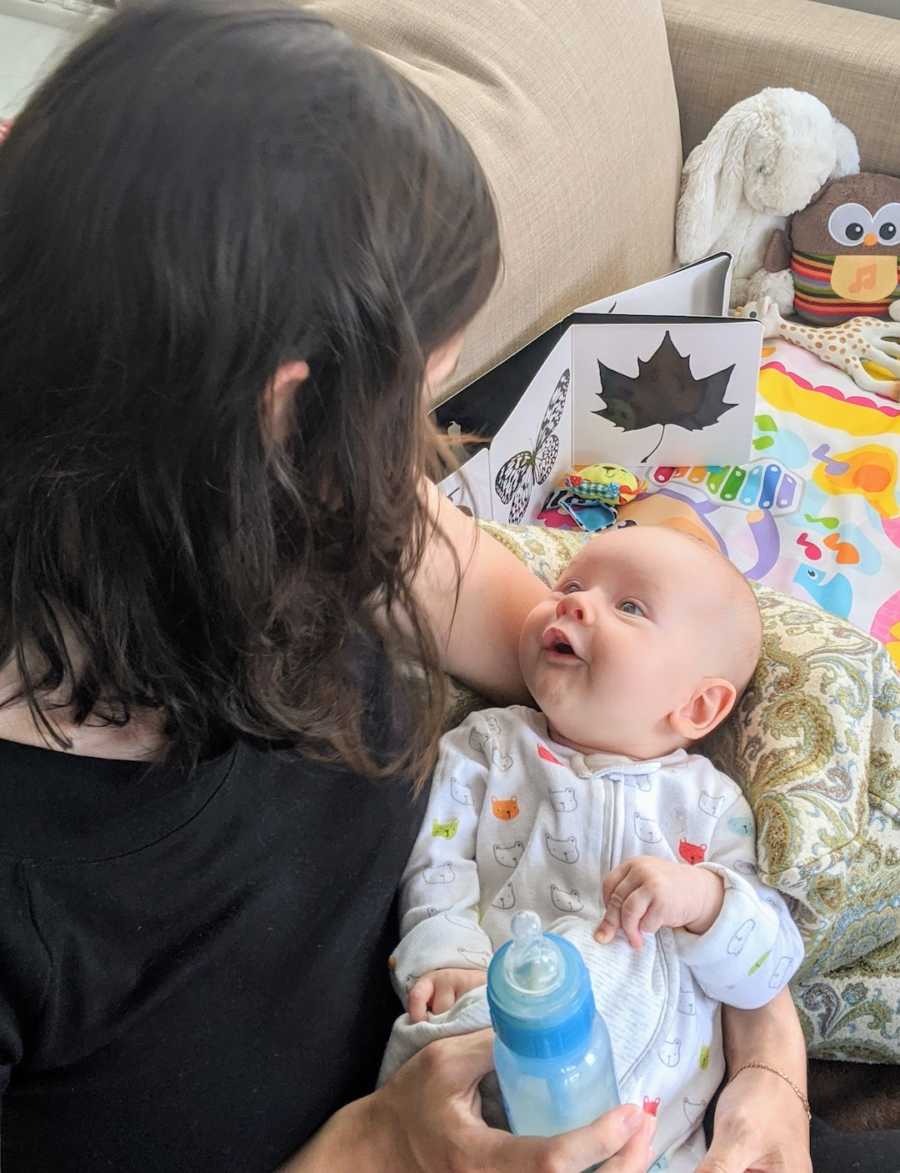
I am beyond grateful I am able to produce enough breast milk for my baby. I am very lucky I was given advice about getting a breast pump at the right time. To me, it seems that this option is not as well known as breastfeeding or formula. I did not know you could pump milk and bottle feed your baby if you have any issues with breastfeeding. It was never mentioned during my appointments with my midwives, they did not talk about it during prenatal classes, I did not come across this information in numerous articles and handouts that write about how to take care of a newborn.
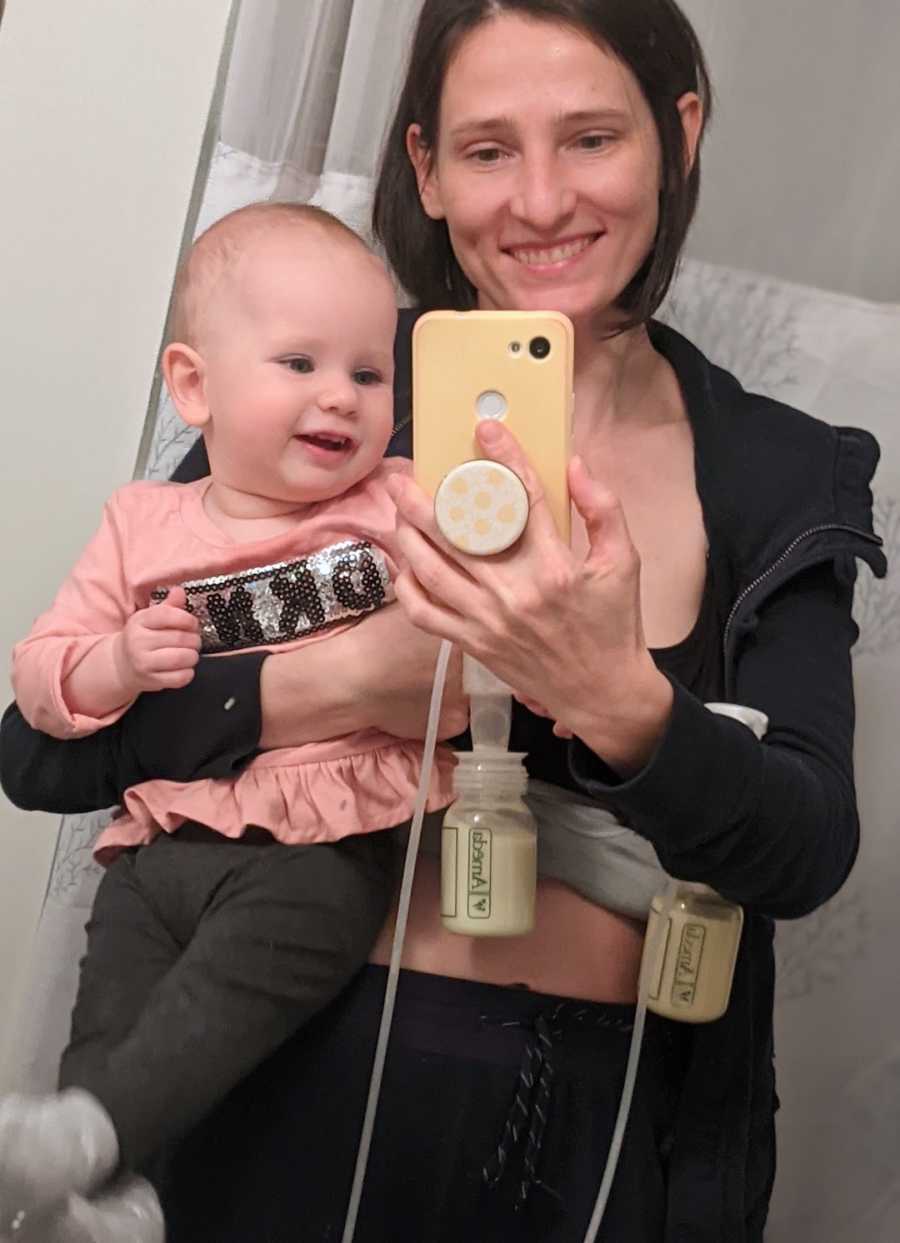
There is just not enough information out there about pumping. Women should know it is not either breastfeeding or formula, that there is a third option. The one that undoubtedly takes a lot of time, effort, and commitment, but it is so worth it. Women should also know if they are unable to breastfeed or do not want to give formula to their babies, they can get breast milk from other moms or from the hospital. It’s definitely something we should talk about more.”
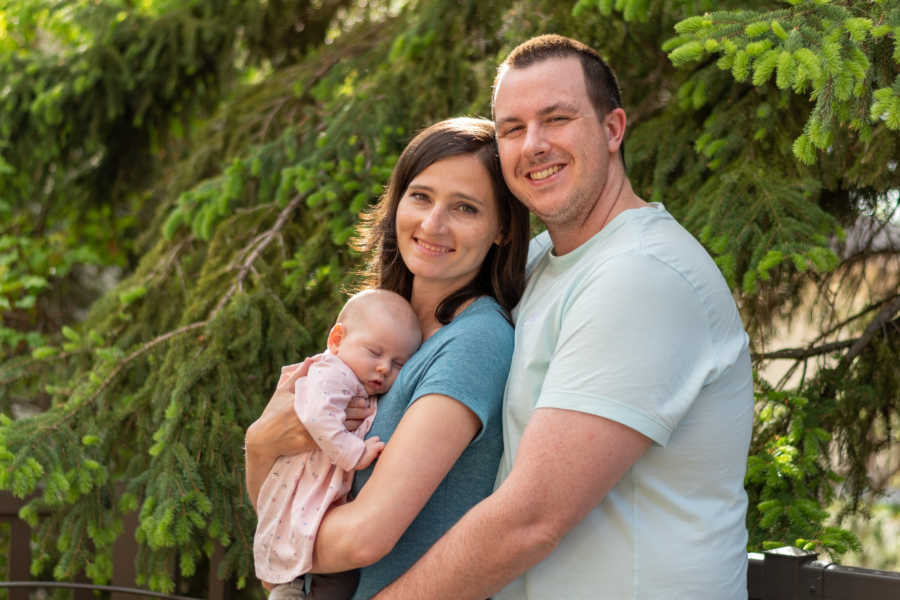
This story was submitted to Love What Matters by Elena Whitehead of Vancouver, British Columbia, Canada. You can follow her journey on Instagram and her blog. Submit your own story here, and be sure to subscribe to our free email newsletter for our best stories, and YouTube for our best videos.
Read more stories like this:
Do you know someone who could benefit from this story? SHARE this story on Facebook to let others know a community of support is available.

